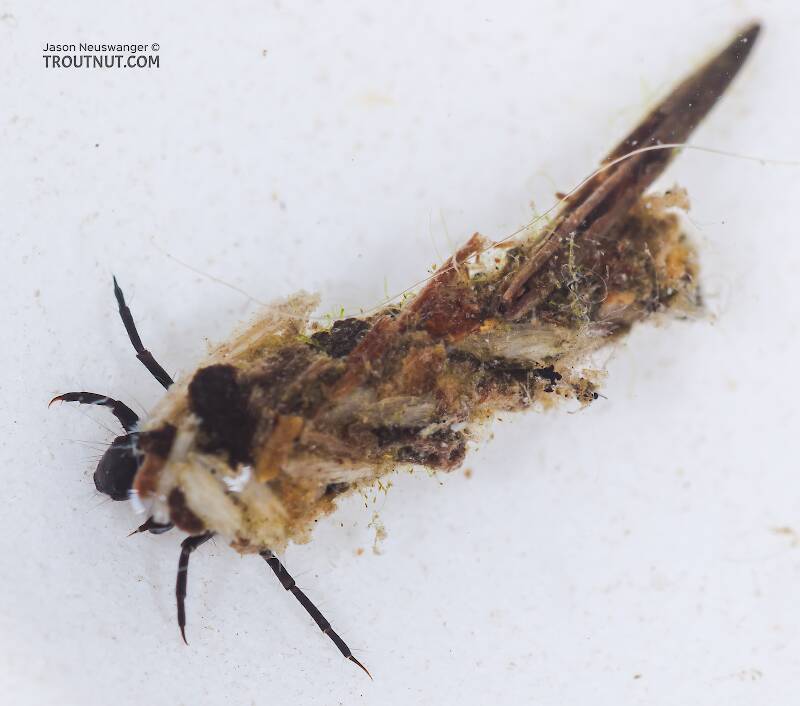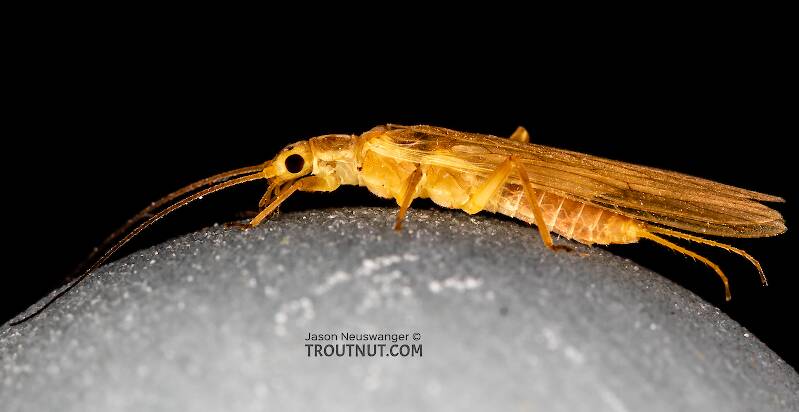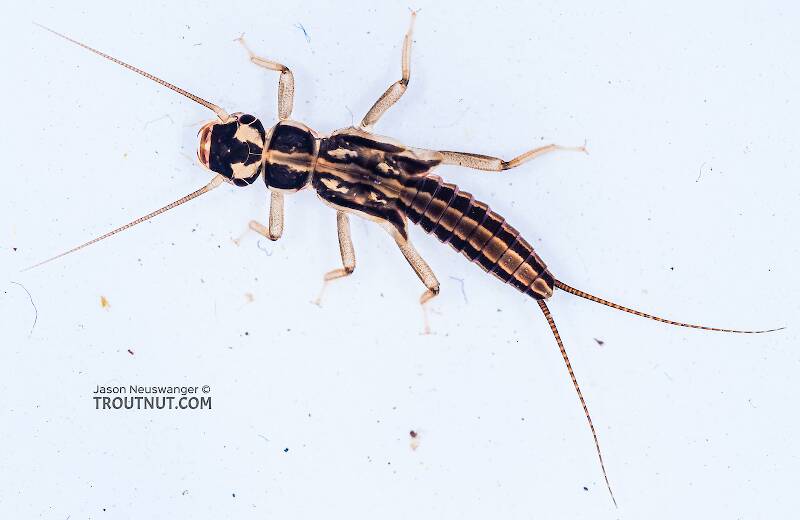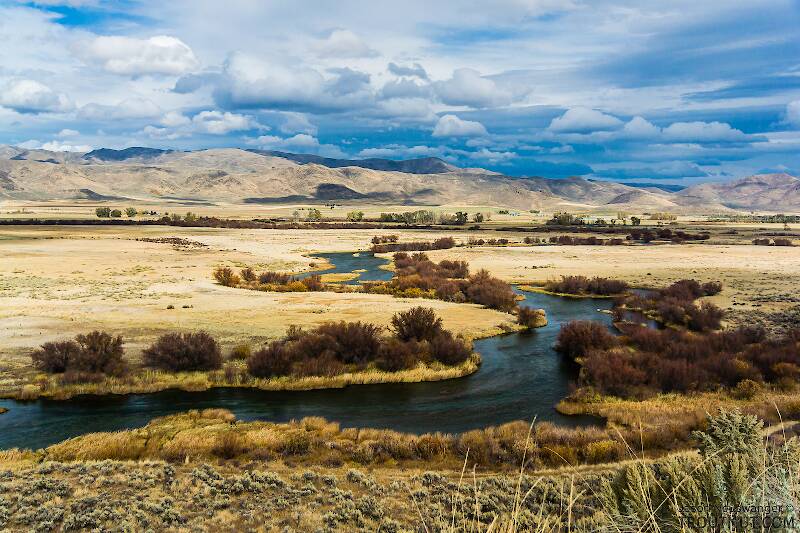
Salmonflies
Pteronarcys californica
The giant Salmonflies of the Western mountains are legendary for their proclivity to elicit consistent dry-fly action and ferocious strikes.
Featured on the forum

This seems to be a young larva of Limnephilus. Although not clear in the picture, several ventral abdominal segments have chloride epithelia.

Troutnut is a project started in 2003 by salmonid ecologist Jason "Troutnut" Neuswanger to help anglers and
fly tyers unabashedly embrace the entomological side of the sport. Learn more about Troutnut or
support the project for an enhanced experience here.
Waterton Stripetails
This common name refers to only one species. Click its scientific name to learn more.
Stonefly Species Isoperla fusca
These are very rarely called Waterton Stripetails.

The family ID on this one was a little bit tricky. Just going by the size, shape, and color, it looks like Chloroperlidae. However, the second anal vein of the forewing is does not appear to be forked, and the apical maxillary palpal segment is close to the length of the penultimate segment, both of which rule out that family. The position of the cubitoanal crossvein relative to the anal cell in the forewing -- touching it in this case -- indicates Perlidae (and it really doesn't have the "look" of Perlidae at all), but other characteristics, such as the metathorastic sternacostal sutures and lack of gill remnants, point to Perlodidae. That's the right answer. Moving on to Perlodidae, the key characteristics in Merritt & Cummins lead straightforwarly to Isoperla, and the species key in Jewett 1959 (The Stoneflies of the Pacific Northwest) leads to Isoperla fusca.
There is one caveat: That source does suggest a May-July emergence, whereas this one was collected in mid-September.
There is one caveat: That source does suggest a May-July emergence, whereas this one was collected in mid-September.

This specimen represents a common find in a late-April sample from the far upper Yakima River. It seems to be the same species as another one I collected previously. Of the species keyed in Szczytko & Stewart 1979, it probably matches Isoperla fusca closest, but there's a good chance it's a species that wasn't in the key. The leg segments have a fringe of fine hairs which is supposed to be absent in Isoperla fusca, and the four dark stripes of the mesonotum and metanotum don't continue as 4 separate stripes on the pronotum as they should in the description of fusca. It's possible fusca is more variable than previously described, or this is a different species not included in that key. It's also worth noting there's definitely no fringe of fine setae on any part of the cerci, just the whorls of little stout ones around segment bases.
See 1 more specimen...

